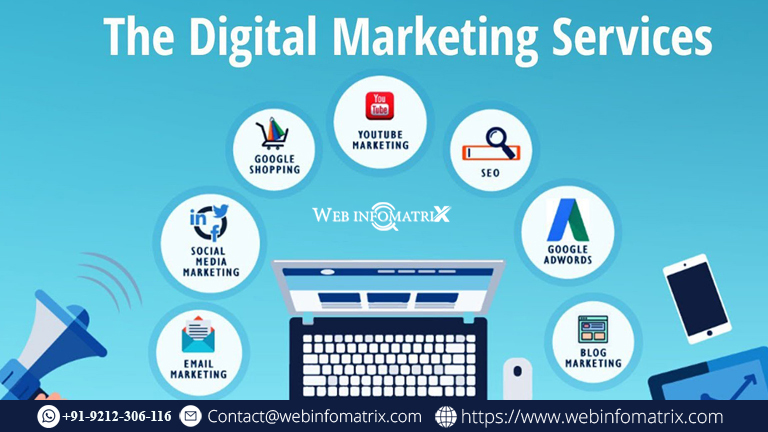Who Is Responsible for Building a Cloud Migration Strategy?
Discover who is responsible for building a cloud migration strategy and how cloud migration service providers ensure a seamless transition.

Cloud migration has become a necessity for businesses aiming to enhance scalability, security, and operational efficiency. However, a successful migration doesn’t happen by chance it requires a well-structured strategy. But who is responsible for building a cloud migration strategy?
From IT leaders to cloud migration service providers, multiple stakeholders play a crucial role in designing and executing a migration roadmap. Understanding these responsibilities is essential for a seamless transition, avoiding downtime, and optimizing performance. This article explores the key players responsible for cloud migration and how engaging the best cloud migration services can ensure a smooth shift.
Key Stakeholders in Building a Cloud Migration Strategy
1. Chief Information Officer (CIO) and IT Leadership
The CIO and IT leaders hold the primary responsibility for cloud migration strategy. They assess business objectives, evaluate existing IT infrastructure, and define key performance indicators (KPIs) for migration success. Their role includes:
-
Aligning cloud adoption with business goals
-
Approving budgets for cloud migration projects
-
Selecting a cloud migration supplier
-
Overseeing security and compliance considerations
2. Cloud Migration Architects
Cloud migration architects design the migration roadmap, choosing the right cloud models—public, private, or hybrid—based on business needs. They are responsible for:
-
Defining migration methodologies (Rehost, Replatform, Refactor)
-
Identifying potential risks and mitigation strategies
-
Selecting the best cloud platforms and tools
-
Ensuring minimal disruption to operations
3. DevOps and IT Teams
IT teams and DevOps engineers execute the migration plan by managing infrastructure provisioning, automation, and application reconfiguration. Their responsibilities include:
-
Implementing cloud security best practices
-
Testing application compatibility and performance
-
Automating workflows using Infrastructure-as-Code (IaC)
-
Ensuring post-migration monitoring and optimization
4. Cloud Migration Service Providers
A cloud migration supplier or service provider plays a crucial role in executing migration strategies efficiently. These experts offer specialized skills, ensuring businesses minimize downtime and maximize performance. Their services include:
-
Conducting cloud readiness assessments
-
Managing data migration securely
-
Providing cost-optimization strategies
-
Ensuring compliance with industry regulations
Engaging with the best cloud migration services ensures businesses leverage cloud-native features while avoiding common migration pitfalls.
5. Security and Compliance Teams
Cloud security is a major concern during migration. Security teams ensure that:
-
Data encryption and access control measures are in place
-
Compliance with GDPR, HIPAA, or industry-specific regulations
-
Threat detection and response mechanisms are integrated
-
Cloud security policies align with business needs
6. Business and Finance Teams
Migrating to the cloud isn’t just a technical decision—it’s a financial and operational one. Business leaders and finance teams assess cost implications, return on investment (ROI), and long-term benefits. Their responsibilities include:
-
Budgeting and cost analysis
-
Evaluating cloud pricing models (pay-as-you-go, reserved instances)
-
Assessing vendor contracts and cloud migration service providers
7. Cloud Vendors and Consultants
Top cloud providers like AWS, Azure, and Google Cloud offer consultation and migration tools. Businesses can also work with third-party cloud migration service providers specializing in cloud adoption and managed services.
Why Partnering with the Best Cloud Migration Services Matters
Choosing the best cloud migration services simplifies migration complexities and ensures operational continuity. Benefits of partnering with a cloud migration supplier include:
✔ Expert guidance for selecting the right cloud model
✔ Risk mitigation strategies to prevent data loss
✔ Automation tools for faster deployment
✔ Cost optimization through efficient resource allocation
Challenges in Cloud Migration and How to Overcome Them
While cloud migration offers numerous benefits, businesses often face challenges such as:
|
Challenges |
Solutions |
|
Downtime and Disruptions |
Plan phased migration and leverage automation |
|
Security Vulnerabilities |
Implement end-to-end encryption and IAM controls |
|
Cost Overruns |
Optimize resources with FinOps strategies |
|
Compatibility Issues |
Test applications pre-migration |
By collaborating with cloud migration service providers, businesses can navigate these challenges effectively.
How to Choose the Right Cloud Migration Supplier
When selecting a cloud migration supplier, businesses should consider:
-
Expertise: Look for providers with industry experience and a strong portfolio.
-
Security Compliance: Ensure adherence to regulations like GDPR, SOC 2, and ISO 27001.
-
Scalability: Choose a provider offering solutions that align with future growth.
-
Support Services: 24/7 technical support and post-migration assistance.
FAQs
What is a cloud migration strategy?
A cloud migration strategy is a roadmap that outlines the steps, tools, and best practices for moving data, applications, and workloads from on-premises infrastructure to a cloud environment.
Who should lead a cloud migration project?
A cloud migration project is typically led by the CIO, IT leadership, and cloud architects. However, businesses often partner with cloud migration service providers for specialized expertise.
Why is cloud security crucial during migration?
Cloud security ensures that data remains protected from breaches, unauthorized access, and compliance violations during migration.
How do I choose the best cloud migration services?
Look for cloud migration service providers with a proven track record, strong security measures, cost-effective solutions, and end-to-end migration support.
What are the common cloud migration challenges?
Challenges include downtime, security risks, cost overruns, and compatibility issues. Engaging the best cloud migration services helps mitigate these risks.
How long does cloud migration take?
The duration depends on the complexity, data volume, and migration strategy. Small migrations may take weeks, while large-scale enterprise migrations can take months.
Conclusion
A successful cloud migration strategy requires collaboration between IT leaders, cloud architects, DevOps teams, security experts, and cloud migration service providers. By partnering with the best cloud migration services, businesses can streamline their transition, optimize costs, and ensure security compliance.
What's Your Reaction?






















